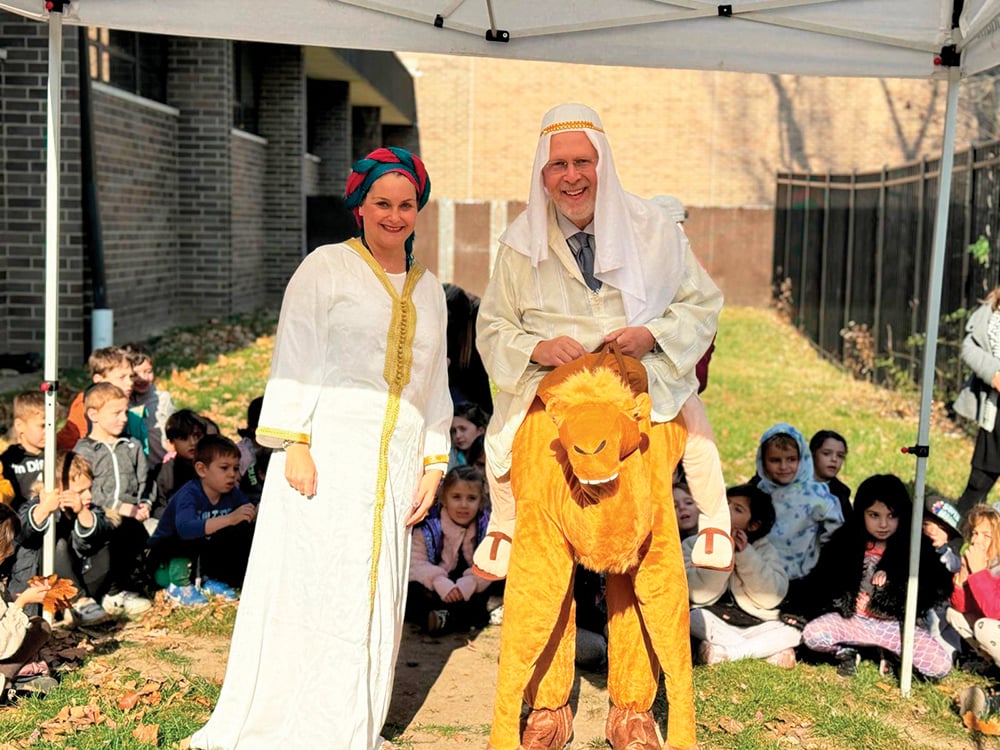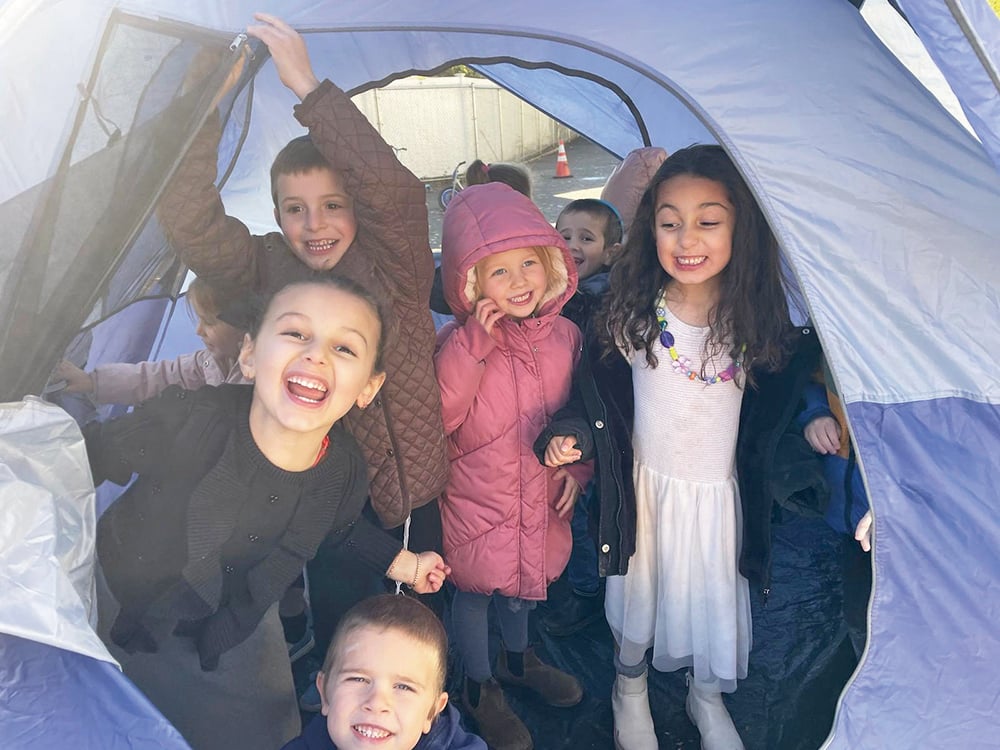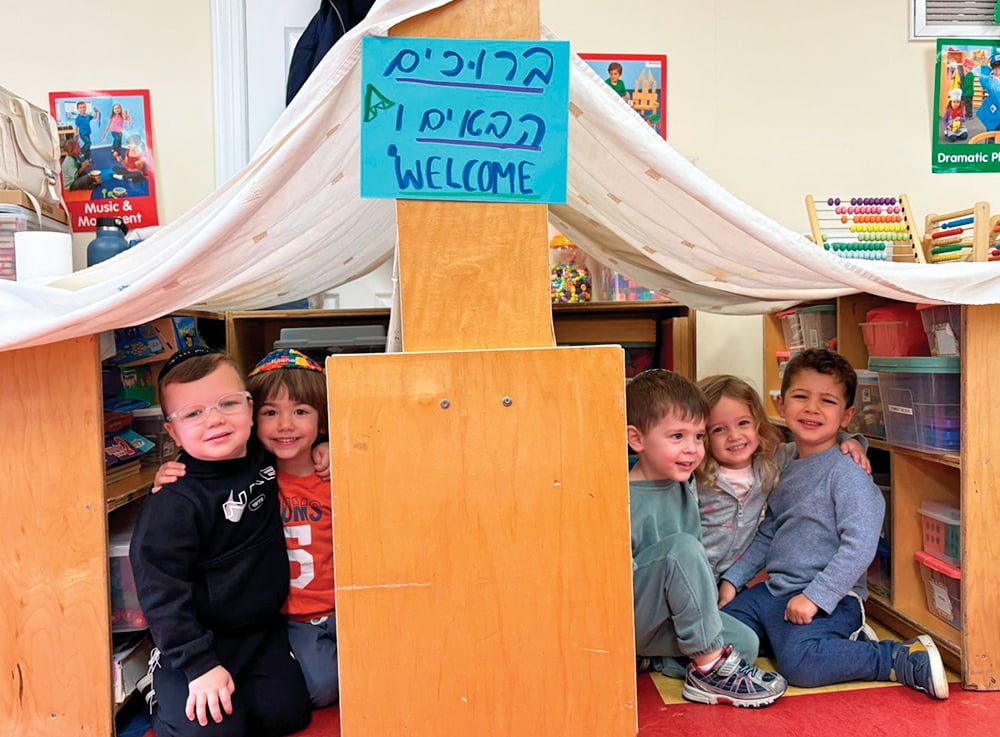It’s always a special zechut to travel to Eretz Yisroel. The last time I had been there was five years ago, when I went with our oldest son, Shalom, in honor of his bar mitzvah.
This year, Shalom is learning in Merkaz HaTorah in Yerushalayim, so I had an added incentive to visit. Although I booked my flight to visit Eretz Yisroel a few months ago, at the end of January, with constantly-changing COVID regulations and recent re-closing of the borders, I didn’t think the trip would end up happening. But thankfully it did, and I savored every minute of it.
One of the things I didn’t anticipate was encountering sheleg (snow) in Yerushalayim! The night before I was scheduled to fly home, a rare snowstorm blanketed the city with a few inches of snow.
Snow is rare in the Holy City, and when it does occur, children squeal with delight, as I heard from the window of where I was staying as soon as the snow began. But it also creates a very messy situation. As roads are plowed slowly in the center of the street, melting snow immediately fills the cleared area, creating a sloshy mess.
I didn’t bring boots with me for my week-long trip. In addition, my sneakers are not only not water-resistant, but they also seem to be water-attracting. Walking to shul through the snow-covered roads the morning after the storm felt like walking through the snow in sandals. It was quite an unpleasant and cold experience.
Aside from the unexpected snow, whenever it rains in Yerushalayim, the roads become slick and slippery.
One of the nights during my stay, when it wasn’t raining, Shalom was showing me the roof of one of the yeshiva buildings in Yerushalayim. I wanted to get a better view of the stunning Yerushalayim skyline and stepped onto what I thought was a step to bolster myself up. It turns out that it was a concrete plant holder that was full of water. Thankfully I didn’t fall too hard, but for the rest of the night, my socks and sneakers were completely drenched.
When we left that yeshiva, we enjoyed a shawarma supper with some of Shalom’s friends. Then we took the light rail to Yaffa gate, from where we walked to the Kotel. With every step throughout the evening, I was reminded of that one misstep into the empty plant pot. Throughout the evening, I had to bear the discomfort of soaked socks and sneakers.
No doubt everyone has had the uncomfortable experience of having wet socks. When it rains, everyone is in the same boat (pun intended). But when you happen to have stepped into a puddle on an otherwise dry day and are the only one walking around with drenched socks, the silent discomfort is particularly unpleasant.
On another occasion during my visit, I was eating lunch in a Jerusalem eatery. The sign above the sink said in Hebrew, “na liftoach haberez ba’adinut” (please open the faucet gently). When I tried to turn the faucet on,however, it didn’t work, so I pulled a little harder. The result was a rush of water all over my shirt and pants.
When your pants and shirt are wet, everyone can see it and will probably ask what happened and give you some sympathy. But when your socks are wet, no one has any inkling of your discomfort.
We encounter so many people in our daily lives—friends, neighbors, acquaintances, business associates, gas station attendants, cashiers and everyone we pass on the street. We nod, smile, make small talk and sometimes even have longer conversations or more regular interactions. Yet we may have no idea of the other person’s metaphorical wet socks. We have no way of knowing that despite their external smile, every step may be uncomfortable and challenging for them.
The truth is that every one of us walks around with wet socks. Some of us deal with it better, but most of us hide it from everyone else.
Wet socks can invite fungus and other issues if the wearer walks around with them for a prolonged period of time. The discomfort can lead to every step becoming painful.
At the end of the day, we have no idea about the journeys others are on. We see them take a few steps and assume we understand where they are coming from and where they are going.
The Mishna (Avot 2:5) states that one shouldn’t judge his friend until he “reaches his place.” In our vernacular, we say one shouldn’t judge someone until he’s walked a mile in his shoes.
Sfat Emet quips that the reality is that no one can ever truly walk in someone else’s shoes. Even if I find myself in the exact same situation as another, I have different life experiences, proclivities, particularities, traumas, challenges and thought processes. Therefore, I can never truly understand what it’s like for my friend. In other words, we can never truly pass judgment on other people’s behaviors and decisions. The reality is that we can never know what the experience is like to walk in someone else’s shoes.
Be reassured that my week-long visit also had much sunny weather when my socks were perfectly dry.
When I arrived home on Friday morning, I was greeted with a Shabbat snowstorm in New York. Although for this storm, I had boots, I would rather have wet socks to walk through snow in Yerushalayim than to have dry socks and boots during a snowstorm in New York!
Rabbi Dani Staum, LMSW, is a popular speaker and author. He is a rebbe in Heichal HaTorah in Teaneck, New Jersey, and an experienced therapist, recently returning to seeing clients in private practice, as part of the Rockland CBT group. For appointments Rabbi Staum can be reached at 914-295-0115. Looking for an inspirational and motivating speaker or scholar-in-residence? Contact Rabbi Staum for a unique speaking experience. Rabbi Staum can be reached at [email protected]. Archives of his writings can be found at www.stamtorah.info .













